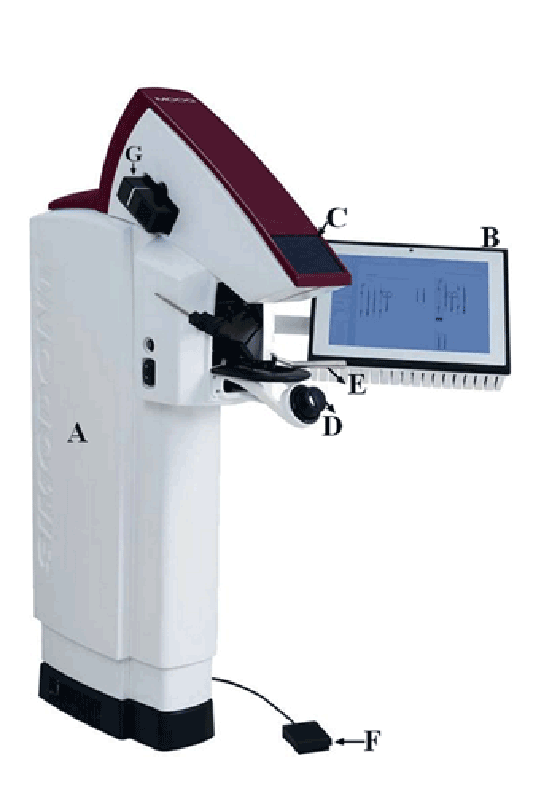
Figure 1: Showing the Simodont® dental trainer. A= The simulator unit, B= Panel PC, C= Stereo projection, D= Spacemouse, E= Handpiece, F= Foot pedal, G= Projector.

Mahmoud M Bakr1,* Ward L Massey1 Heather Alexander2
1School of Dentistry and Oral Health, Griffith University, Queensland, Australia*Corresponding author: Dr. Mahmoud Bakr, Lecturer in General Dental Practice, School of Dentistry and Oral Health, Grififth University, Queensland, Australia, Tel: +617 56780752, E-mail: m.bakr@griffith.edu.au
Haptic simulators are starting to attract a lot of dental schools to use and implement as part of their preclinical training. However, there is not much data available about the possible ways it could be used to gain the maximum benefits. Students being the end users of this new technology should have a valuable opinion about this topic.
Twenty four dental students enrolled in the 4th and 5th years of the dental science program at the school of dentistry and oral health – Griffith University – Queensland – Australia participated in this study. Participants were offered a trial session on the Simodont® Dental Trainer and were asked to evaluate different aspects of this virtual simulator by completing a pre-experimental and post-experimental questionnaire.
All students valued and appreciated the additional educational benefits the Simodont® Dental Trainer can offer. Before the trial session, fourth year students were more excited and enthusiastic about using the haptic simulator. After the trial session, fifth year students rated the simulator in some aspects higher when compared to fourth year students. All students agreed that Simodont® Dental Trainer should be used in conjunction with other traditional educational methods and to be supplemented by feedback from human educators. Further trials are required to investigate the value of using haptic simulators over a whole semester or a year.
Dental education; Haptic simulators; Psychomotor skills; Preclinical training
Dental students need to develop a fine sense of touch and pressure as early as possible in their learning cycle [1,2]. When novices (early undergraduates) are compared to experts (graduates) the most obvious differences in dental instrument usage relate to the extent of instrument movement and the force used during the procedure. This is usually achieved through the use of simulation in preclinical studies before advancing to performing clinical procedures on patients.
For many years, traditional preclinical teaching used manikins, phantom heads to achieve competence in restorative dentistry. Different attempts were made to develop a dental simulator [2-6]. Most of these dental simulators are still in the early or even experimental phase of development [7]. In the past decade, haptic technology was integrated into the field of dental simulation with success [8-14]. By adding a haptic component to dental simulators, greater sophistication in simulations of various procedures becomes possible. Tactile sensations are very important in all aspects of dental treatment, and incorporating these into a simulator should greatly enhance its usefulness. The value of tactile sensation and haptic feedback has been emphasized in the literature as more important than audio feedback in studies involving normal and visually impaired subjects [15-17].
Haptic technology relies on force feedback and tactile sensation [18]. In the field of medical education, haptic simulators have been introduced and used successfully for many years [19, 20]. Previous studies showed that the use of haptic simulators in training improved students’ skills and performance on patients in comparison to students who were not exposed to this new technology during their medical training [21-23].
Haptic technology seems to have a bright future in dental education [24]. Controlled studies were performed using the DentSim™ dental simulator which consisted of a real dental unit, a manikin head, a tracking system, and software that allow the student to view the results of his or her cavity preparation in the manikin head on 3D models presented on a computer monitor and compare them with the results of an optimal preparation, they showed it aided in decreasing faculty time in instruction and facilitated student training of technical skills [25]. Other advantages of simulation-based environment include safety, ethical benefits [26], increased precision and relevance of training as well as teaching error management. The disadvantages include high costs, need for a long process of assimilation, and the lack of validity of the grading and evaluation systems in use [27]. Most of the previous trials were based on a single tooth standing alone, while for the system to be more realistic, cavity preparations should be done in a tooth included in the oral cavity with realistic force feedback from the tooth as well as the neighbouring tissues, which was tried in a model [28].
More advanced options are being included in this rapidly developing technology, a haptic teaching technique using the forces applied by an expert on the haptic device, but rendering them in the opposite direction was introduced, so the student has to apply back the same amount of forces in the original direction to perform the task correctly [29,30]. A tutoring mode in their study on a virtual reality dental simulator, where dental students can observe a recorded procedure carried out by an expert, and feel the actual movement of the tools through haptic feedback provided was developed, so that they can learn the amount of forces to applied as well as angulations of tools in an interactive manner [31].
Haptic-based simulators require more initial financial investment (on a per unit basis) but require less costly infrastructure, less maintenance, do not require frequent replacement of physical tooth and jaw models or parts compared with manikin-based simulators. Because they are computerdriven, it is feasible to monitor a student’s progress as a task is completed rather than only at specific stages or the end point of the procedure and for review to occur in real time or by playback. Furthermore, the devices permit more objective testing of student performance and most importantly better student self-assessment through objective criteria that can be determined by discipline experts. However, a long track record of well designed trials of these simulators as well as evidence based documentation of their short term and/or long term benefits are lacking.
The goal of this study was to assess the perception of fourth and fifth year dental students of the School of Dentistry and Oral Health, (Griffith University, Australia) of the realism of the Simodont® haptic dental trainer, investigate its value in early development of Psychomotor skills as well as providing feedback for future development of this new haptic simulator.
The Human Ethics office for research (Griffith University) reviewed the protocol for this study and granted permission before commencing the evaluation. The study was carried out in the School of Dentistry and Oral Health (Griffith University), which operates a five-year- Dental Science program in Queensland, Australia.
The Simodont® Dental Trainer (Figure 1) was used in the present study. This unit is manufactured by Moog Industrial Group, Amsterdam. The Simodont® courseware has been developed by ACTA (Academic Centre for Dentistry in Amsterdam) and is currently being trialled in a variety of curricula. The courseware allows a variety of operative dental procedures to be practiced in a realistic virtual oral and dental environment with high fidelity force feedback. This dental trainer has been designed specifically to teach dental students how to drill and manipulate instruments in a realistic low-risk environment. Hand instruments are simulated as well as the use of high and low speed dental burs for cavity preparations and the removal of tooth decay and crown and bridge procedures (Figure 2).
Twenty four 4th and 5th year students from the School of Dentistry and Oral Health (Griffith University) volunteered to participate in this study, to evaluate the reality of different aspects of this new Simodont® haptic dental trainer and its value as a new tool in preclinical dental training and early development of Psychomotor skills.
Evaluation was conducted through the use of a pre-experimental and a post-experimental questionnaire for all participants. The preexperimental questionnaire was designed by educational advisors from ACTA (Academic Centre for Dentistry in Amsterdam), while the postexperimental questionnaire was written by the research team members and edited by educational designers and a curriculum consultant from the Learning Futures Centre – Griffith University, Queensland, Australia.
All participants were asked to fill a pre-experimental questionnaire that contained eight questions detailing their impression, expectations, and attitudes towards the Simodont® Dental Trainer before using it. Responses were captured on a five point Lickert scale, one was considered to show strong disagreement, three being neutral and five showed strong agreement, except for the last question where one was considered very negative, three being neutral and five was considered to be very positive.
All Participants were then given a brief -ten minute- presentation about the Simodont®, a brief description about the new system’s goals and the aim of the present study. Training in the use of the simulator was also provided, then they were allowed to familiarise themselves with the Simodont® dental trainer and navigate through different functions and exercises for 15 minutes before undertaking the evaluation and filling the post-experimental questionnaire. All tasks given to the participants were identical and included manual dexterity exercises (Figure 3), clinical cases on a single tooth presented on the simulator (Figure 4) as well as a full mouth experience (Figure 5) with all teeth present in contact. Participants were not given feedback on their own performance at the end of the session. Technical support was provided if needed during the evaluation session, and any questions related to operation of the dental simulator were answered by a research team member during this training period.
Participants were then asked to complete a post-experimental questionnaire that contained of sixteen questions detailing their experience using the Simodont® dental trainer, the realism of 3D images and force feedback, and the usefulness of this haptic simulator as a tool in preclinical Dental education, improving students’ knowledge, preclinical skills, manual dexterity skills and visual-motor skills. A five point Lickert scale was used for responses. Some questions in the post-experimental questionnaire were designed to measure the degree of satisfaction regarding the same points in the pre-experimental questionnaire. The rest of the questions of the post-experimental questionnaire were also linked to the evaluation points in the pre-experimental questionnaire, but included more detailed information after using the Simodont®. The participants had access to the post-experimental questionnaire before starting the evaluation to get an idea about the aspects needed to be evaluated.
The alpha statistic measures the internal consistency or reliability rating [32]. Separate alpha statistics were calculated for ratings of the questions of the pre and post experimental questionnaires. Both questionnaires showed high reliability (alpha=0.910 (pre), alpha=0.949 (post)).

Figure 1: Showing the Simodont® dental trainer. A= The simulator unit, B= Panel PC, C= Stereo projection, D= Spacemouse, E= Handpiece, F= Foot pedal, G= Projector.
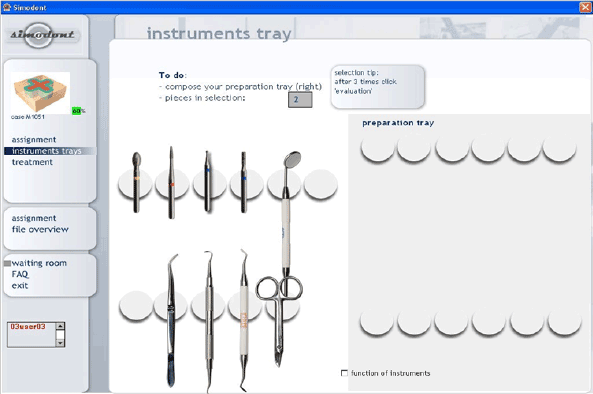
Figure 2: showing the instruments tray used for all exercises on the Simodont® dental trainer.
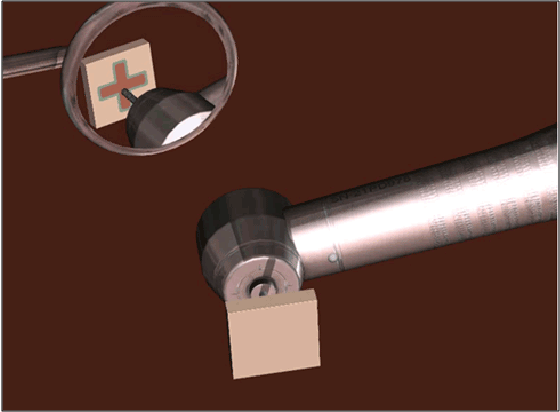
Figure 3: Showing a manual dexterity exercise using indirect vision on the Simodont® dental trainer.
There no significant differences between responses of the 4th and 5th year dental students to the pre-experimental questionnaire, except for the question related to excitement about the Simodont® dental trainer where the 4th year dental students were significantly more excited (P<0.05) (Table 1).
After using the Simodont® dental trainer, the 5th year students rated the simulator significantly higher than the 4th year students with regards to feeling comfortable using it, feeling confident about their skills after using it, and its value in improving their visual motor skills. On the contrary, 4th year students significantly preferred feedback from Simodont® to be supplemented by a human tutor (Table 2).
The use of new technologies and methods in an educational process has to go through certain steps, starting with faculty acceptance, pilot studies, trial and testing, followed by introduction to staff and students in different educational stages to get the maximum benefit of it, then overcoming the initial disappointment and fear that develops as a result of the high unrealistic expectations of users initially, finally the decision has to made whether to use the new technology in conjunction with the old traditional methods or to totally replace those traditional methods and depend solely on the new technology. This is usually accompanied by a period of excitement, followed by disappointment if the technology was not up to the users’ highest expectations. Our 4th year students were more excited about using the Simodont® dental trainer when compared to 5th year students. After using the simulator, the 5th year students rated most of its aspects higher than their peers in 4th year. This can be explained by the fact that the Simodont® dental trainer was not up to the high expectations of the 4th year students.
In order to ensure a reliable and detailed evaluation of this new Simodont® dental simulator, pre and post experimental questionnaires were designed to allow evaluation of the Simodont® dental trainer from an educational and technical point of view, and included general questions regards the ease of use and questions about users’ confidence during and after use. In our study, participants agreed that there were some technical issues that needed to be solved by the manufacturer in order to obtain a more realistic experience. They also agreed that the Simodont® dental trainer is a promising tool that could be only used as a supplementary tool in the future in dental education. In addition to that they valued the presence of the human element in the educational process. One of the reported limitations of the Simodont® in comparison to other dental simulators was that students could only perform exercises in the location of the dental school, while with other dental simulators exercises can be sent to them to be done in their spare time in the convenience of their own homes.
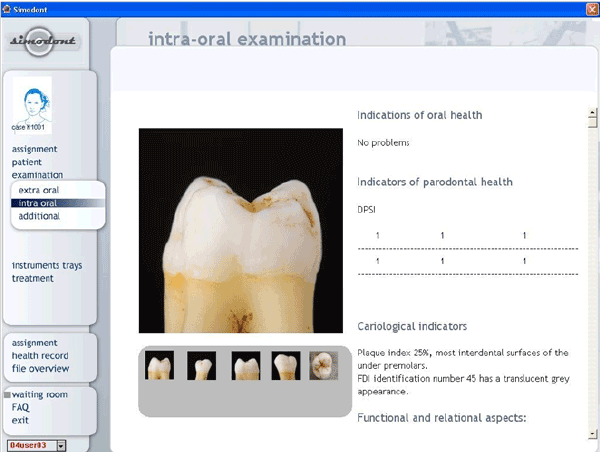
Figure 4:Showing a clinical case presented on a single tooth on the Simodont® dental trainer.
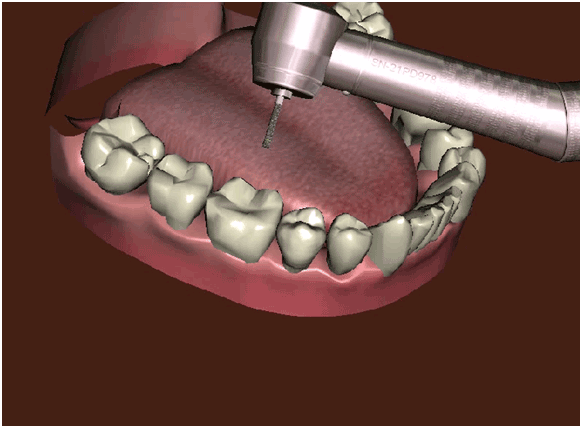
Figure 5: Showing a full mouth experience on the Simodont® dental trainer.
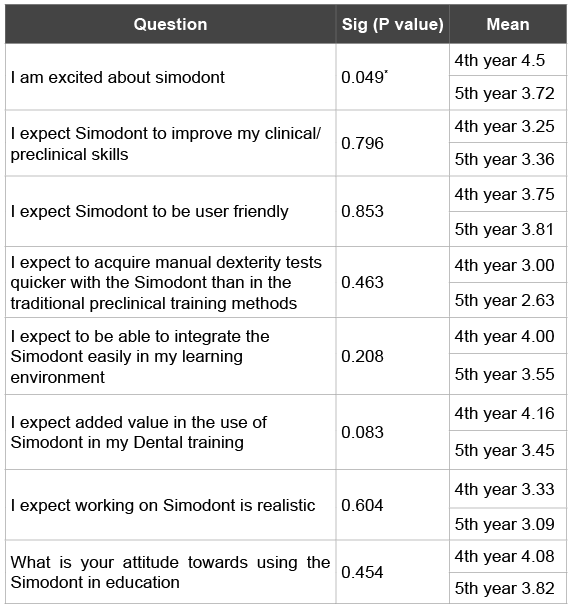
Table 1: Showing a summary of the questions in the pre-experimental questionnaire and the significance in differences between responses obtained from 4th and 5th year students.
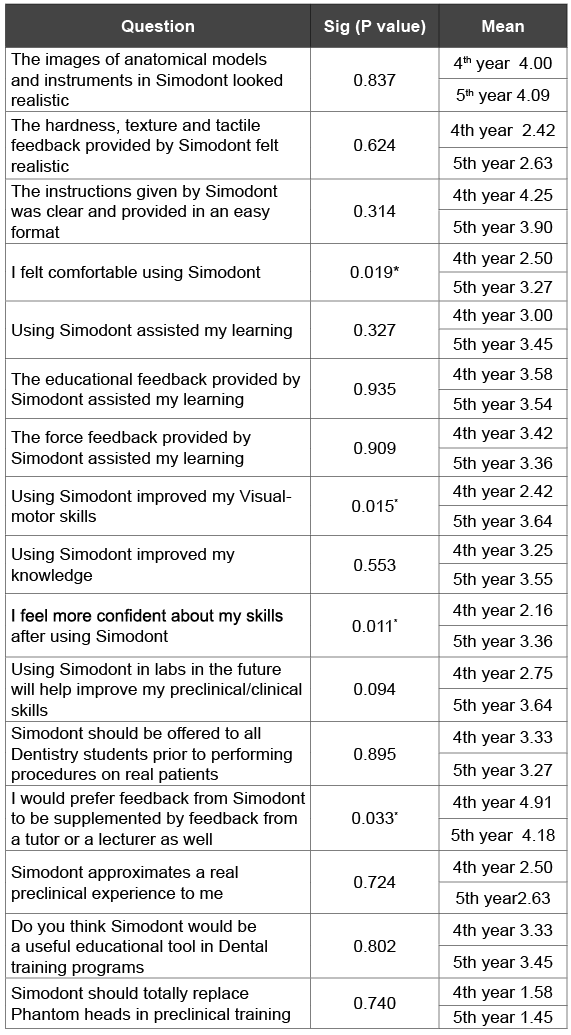
Table 2: Showing a summary of the questions in the post-experimental questionnaire and the significance in differences between responses obtained from 4th and 5th year students.
The haptics technology allows students not only to “treat a virtual patient,” but also to receive objective feedback about the procedure during and after the “treatment session.” which can be supplemented by feedback from an instructor or tutor. It also allows evaluation of all aspects of the procedure at any time, either on site or off site [15], and endless repetition of procedures without any extra cost, which creates a more independent learning environment. This was evident in our study as all students especially 5th years felt more confident about their skills after using the Simodont® dental trainer.
Previous studies by Bakr et al. showed similar results while evaluating the Simodont® dental trainer by academics and second year dental students. Students appreciated the value of the presence of the human element in the educational process and did not want to be taught only by a machine. Also second year students were more enthusiastic about the Simodont® dental trainer in comparison to the academic staff members. They valued the different options virtual simulators can offer to students in preclinical training despite the fact that short term exposure to the Simodont® dental trainer did not have a significant effect on their performance in a previously unseen task [34,35].
The Simodont® dental trainer was accepted by 4th and 5th year dental students in the School of Dentistry and Oral Health – Griffith University – Australia. However, despite the excitement the 4th year students had before using the simulator, the 5th year students appreciated it more after using it. Further studies are required to investigate the best possible ways for this technology to be integrated in dental curricula to supplement the traditional preclinical educational methods.
*Simodont® dental trainers were leased from the manufacturers for evaluation and assessment. No company representative was involved in designing the study or analyzing the results. This study was not financially supported by any commercial sources.
**The images used in this study remain the proprietary property of MOOG Inc. and can only be used and reproduced with the explicit approval of MOOG Inc.
Funding: None
Competing Interests: None declared
Ethical approval: This study was approved by The Human Ethics office for research (GriffithUniversity), Australia (DOH/08/11/HREC).
Download Provisional PDF Here
Aritcle Type: Research Article
Citation: Bakr MM, Massey WL, Alexander H (2015) Can Virtual Simulators Replace Traditional Preclinical Teaching Methods: A Students’ Perspective? Int J Dent Oral Health 2(1): doi http:// dx.doi.org/10.16966/2378-7090.149
Copyright: © 2015 Bakr MM, et al. This is an open-access article distributed under the terms of the Creative Commons Attribution License, which permits unrestricted use, distribution, and reproduction in any medium, provided the original author and source are credited.
Publication history:
All Sci Forschen Journals are Open Access